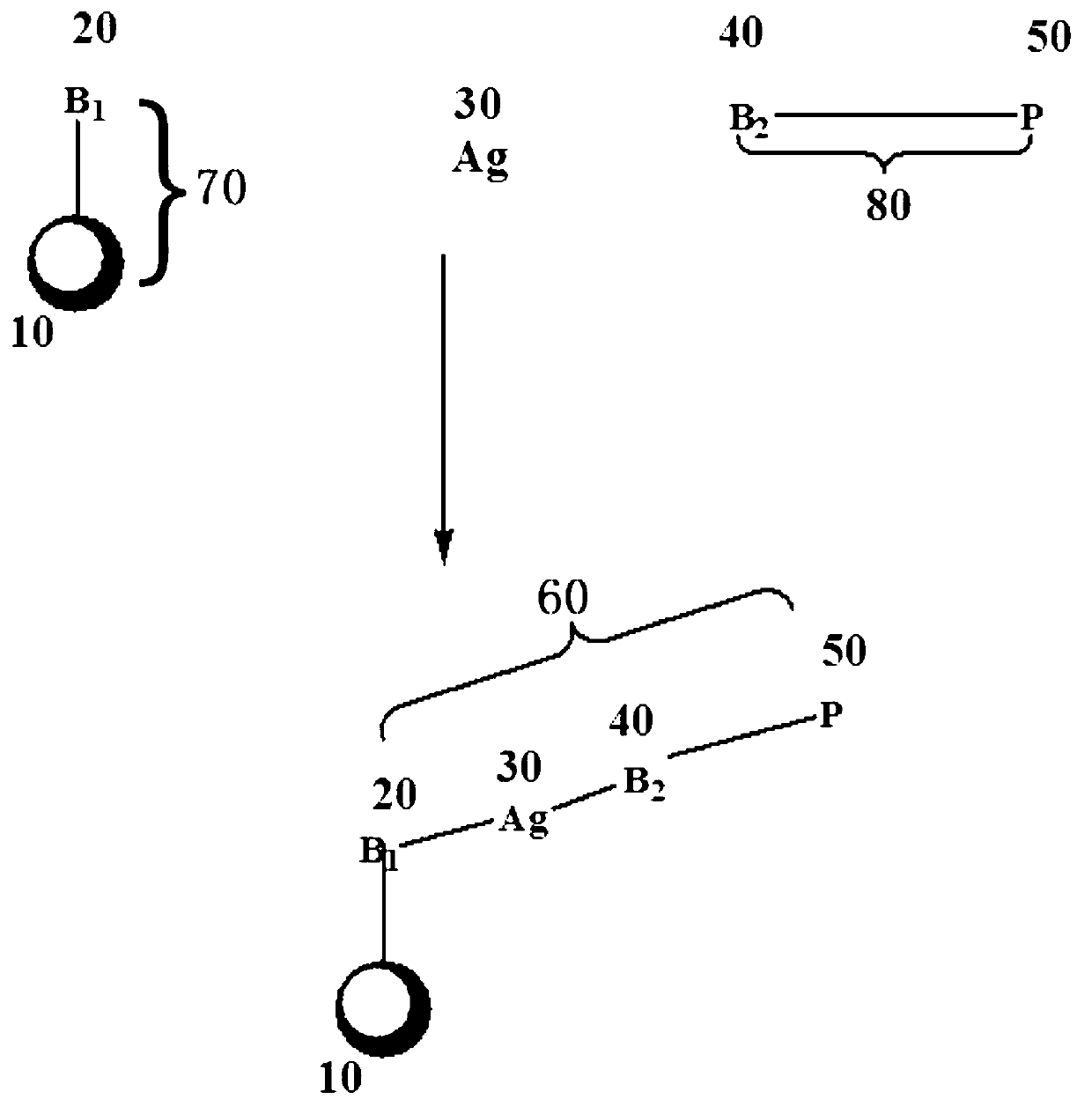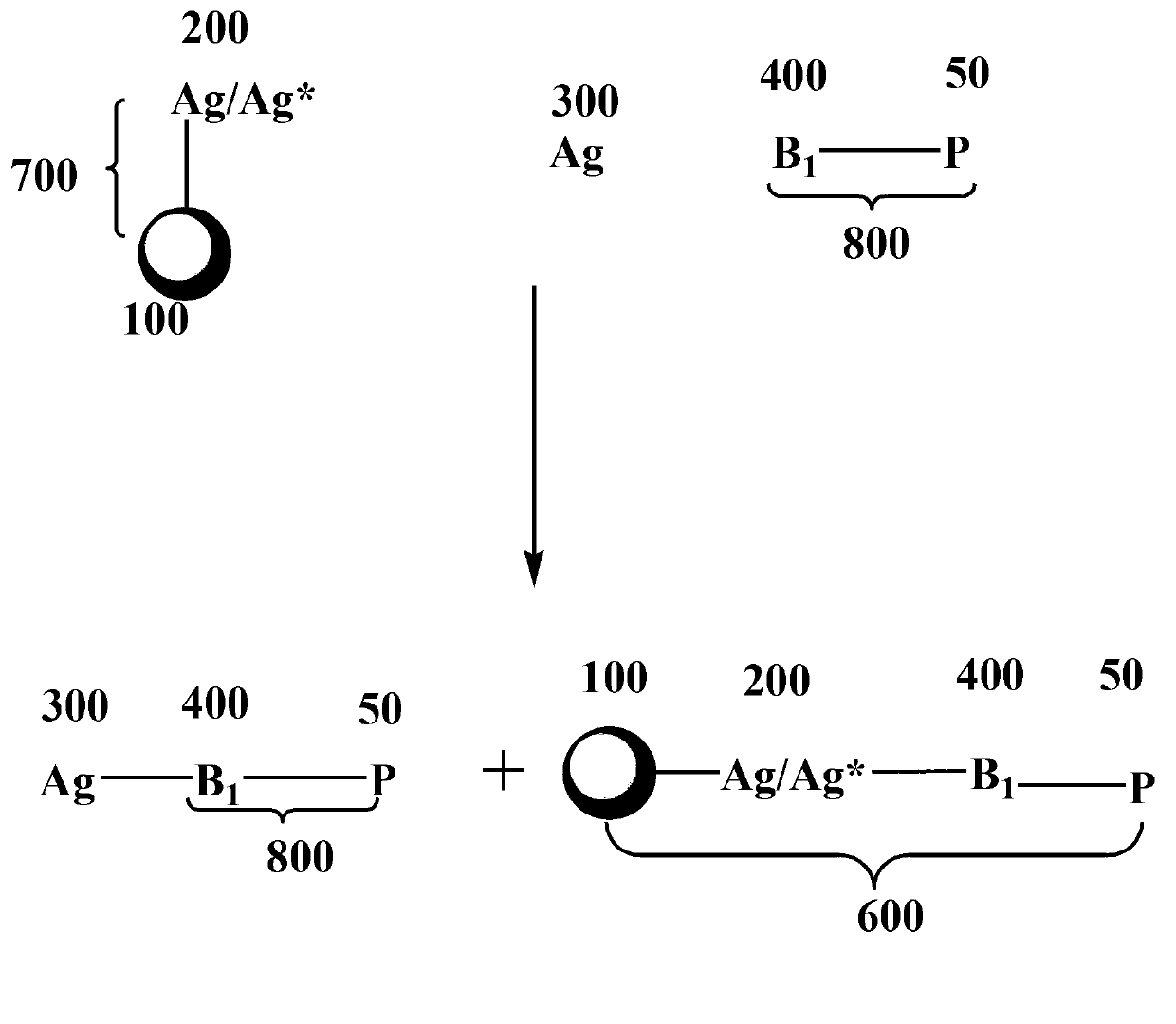Magnetic binding assays method utilizing time-resolved up-converting luminescence detection
A measurement method and magnetic technology, applied in the field of detection, can solve the problems of reducing the accuracy of results
- Summary
- Abstract
- Description
- Claims
- Application Information
AI Technical Summary
Problems solved by technology
Method used
Image
Examples
Embodiment 1
[0085] Example 1: Preparation of up-conversion luminescent probes
[0086] To 500 μl of aqueous solution containing 50 mg of carboxylic acid-functionalized polymethacrylic acid latex particles PP02N (0.33 μm in diameter, supplied by Bangs Laboratories) was added 2 ml of ethanol while stirring. An appropriate amount (eg 1% by weight of the latex particles) of vinyl chloride containing europium chelate (eg 3% by weight of the total solvent) is slowly added to the particle suspension while stirring. The mixture was stirred for half an hour. An appropriate amount of water (eg, four times the total volume of the initial solvent) is then slowly added to the stirred mixture over a certain period of time (eg, 2 hours). After the addition of water was complete, most of the ethanol was removed from the mixture by rotary evaporator. The particles were then washed twice by centrifugation using 90% ethanol. The particles were then washed twice with water. The washed particles were then...
Embodiment 2
[0087] Example 2: Binding antibodies to upconverting luminescent probes to prepare probe conjugates
[0088]200 µl of the probe particles prepared in Example 1 were washed once with 1.5 ml of carbonate buffer and twice with Mes buffer (PH=4.3) by centrifugation. The washed probe particles were resuspended in 0.1 ml of Mes buffer, and 0.1 ml of Mes buffer dissolved with 6.2 mg of carbodiimide (provided by Polysciences) was added to the suspension for activation treatment. The mixture was allowed to react on a shaker at room temperature for 30 minutes. The activated probe particles were then washed twice with borate buffer. The activated probe particles were resuspended in 0.185 ml of borate buffer, and 15 μl of LHα monoclonal antibody (LHαMab, 9.8 mg / ml, supplied by Fitzgerald Industrial International) was added thereto. The reaction mixture was allowed to react overnight on a shaker. The particles were then collected and incubated in 0.2 ml 0.1 M ethanolamine for 15 minutes...
Embodiment 3
[0089] Example 3: Binding antibodies to magnetic beads to produce magnetic bead conjugates
[0090] 100 μl of 10% carboxylated magnetic beads (1.5 μm, provided by Bangs Laboratories) were washed once with 1.5 ml of carbonate buffer and washed twice with Mes buffer (PH=4.3) by passing through the magnetic separator. The washed particles were resuspended in 0.1 ml of Mes buffer, and 0.1 ml of Mes buffer dissolved with 6.2 mg of carbodiimide (provided by Polysciences) was added to the suspended particles for activation treatment. The mixture was allowed to react on a shaker at room temperature for 30 minutes. The activated magnetic beads were then washed twice with borate buffer. The activated magnetic beads were resuspended in 0.185 ml of borate buffer, and 15 μl of LH β monoclonal antibody (LH βMab, provided by Fitzgerald Industrial International) was added thereto. The reaction mixture was allowed to react overnight on a shaker. The bead conjugates (pellets) were then colle...
PUM
| Property | Measurement | Unit |
|---|---|---|
| diameter | aaaaa | aaaaa |
| diameter | aaaaa | aaaaa |
| diameter | aaaaa | aaaaa |
Abstract
Description
Claims
Application Information
 Login to View More
Login to View More - R&D Engineer
- R&D Manager
- IP Professional
- Industry Leading Data Capabilities
- Powerful AI technology
- Patent DNA Extraction
Browse by: Latest US Patents, China's latest patents, Technical Efficacy Thesaurus, Application Domain, Technology Topic, Popular Technical Reports.
© 2024 PatSnap. All rights reserved.Legal|Privacy policy|Modern Slavery Act Transparency Statement|Sitemap|About US| Contact US: help@patsnap.com










